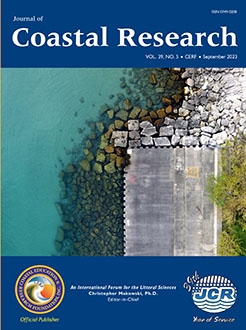Long, S.A.; Mango-Mutiti, C.; Mutiti, S., and Weese, D.A., 2023. Investigating the effects of increasing water salinity on an endemic crayfish. Journal of Coastal Research, 39(5), 816–822. Charlotte (North Carolina), ISSN 0749-0208.
The greatest diversity of freshwater crayfish is found in the southeastern United States, home to nearly 75% of the world's known crayfish species. Many of the freshwater habitats for these crayfish are threatened by human activities and face degradation from multiple fronts, one being climate-related sea-level rise. This threat is significant for island populations that are unable to disperse to favorable locations. The goal of this study was to investigate the salinity tolerance of Procambarus lunzi (Hobbs 1940b), a species endemic to a small coastal region in the southeastern United States, to predict how sea-level rise might affect vulnerable coastal populations. A total of 171 crayfish was collected from a barrier island in Georgia and exposed to three treatments: freshwater, a slow salinity increase (salinity raised by 1.5‰ weekly), and a fast salinity increase (salinity raised by 3‰ weekly). Weekly mortalities were recorded and used to compute percent survivorship. Individual body masses were also monitored weekly and the average change in body mass between treatment groups was compared using one-way analysis of variance. Regression analysis was used to assess the relationship between initial body mass and the salinity level tolerated before mortality occurred. There was no significant difference in body mass change between the control group and the salinity treatment groups. The salinity level tolerated before mortality occurred was not correlated with individuals' body mass at the start of the treatments. The first mortality occurred at 30‰ salinity and 50% mortality occurred when salinity was >39‰. These results indicate a high tolerance to salinity that was unexpected for a freshwater species. The implication is that P. lunzi may be able to withstand habitat degradation due to sea-level rise given its relatively high tolerance to increases in salinity.





